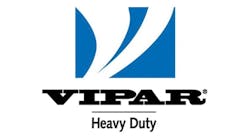After a couple of really great years for the transportation equipment market, 2019 could be pretty great, too—but the party is winding down, according to the forecast FTR Associates provided in a Dec. 6 conference call.
“We have had a fundamental step up in growth throughout 2017 and 2018,” said Jonathon Starks, chief intelligence officer for FTR, referring to the broader economy. “Unfortunately, as we look into 2019, some of those pressures that were building up to help growth are subsiding. But we still have an expectation of a fairly robust economic environment, just one that is showing a little bit of deceleration.”
Indeed, FTR forecasts GDP will taper off next year, from a high of 3.2% in the first quarter to a low of 2.8% by Q4—but an annual rate of about 3% for the year would’ve been something to look forward to for most of this decade.
More concerning, that deceleration brings more risk into the picture—meaning there’s less margin for error, and the economy is more vulnerable, he added.
“There are more concerns out there, whether you’re talking trade, government spending, business investment—these are fundamental underpinnings,” Starks continued. “And as they remain unresolved issues, that becomes a further constraint on growth—even if you don’t have a significant change in the actual conditions in the economy.”
Industrial production growth is an indicator to keep an eye on. The measure has been strong in 2018, driven partly by a resurgence in oil and gas output, Starks noted, but the segment is weakening.
Looking at the unemployment rate, the current labor market is the tightest in 50 years. FTR predicts the market will remain tight, with the rate to settle at 3.5% in 2019. “That continues to put pressure on wages, but it also puts pressure on the producers and manufacturers,” he said. “It’s going to be a continuous struggle to be able to grow and add labor.”
And no new workers means no new investment. That means no growth.
For the transportation forecast, FTR projects the demand for truck loadings to continue to slip from the peak levels of 5% growth reached earlier this year, but still growing at a moderate pace of 2.5% in 2019.
“That’s still strong enough to keep some pressure on capacity, on the need to add equipment,” Starks said. “But it’s not enough to create a really fundamental change in the marketplace like we had this time last year.”
Pointing to the dramatic reduction in spot market activity since mid-year, Starks again notes that this indicates a return to “a more normal environment” for trucking, and a more stable spot market is good “in the long run.”
Translating the economic numbers into equipment demand, Don Ake, FTR vice president, commercial vehicles, first outlined the ways in which the upward pressure on the economy over the past two years actually led to problems, specifically with regard to shortages of labor, materials, and transportation.
“In 2015 we had a strong [transportation equipment] market, but a lot of other sectors weren’t as strong, so we had plenty of workers and materials to get the trucks and trailers built,” Ake said. “Not the case in 2018 when we were competing with everybody else.”
Supplier problems that began in February and got worse for several months resulted in an estimated 10,000 “semi-completed” trucks being parked for a time due to lack of components. The problems peaked in June, but the supply chain remains tight, Ake noted.
“The industry did a great job responding to this,” he said. “Right now, we’re in a better position than we were—but we can’t say we’re in a good position yet. We’re still very vulnerable to any natural disasters, labor strikes, even tariff issues as we go forward.”
He illustrated his points with charts showing the huge month-to-month swings in the build totals for Class 8 trucks and heavy-duty trailers, as units were pulled from the production lines and parked until components were received to complete them.
That volatility has posed challenges for FTR’s forecasts, he pointed out. “Basically, we were trying to forecast supplier deliveries—which is very difficult,” Ake said. “We’re hoping, at this point, that suppliers are supplying at a pretty constant rate and the data becomes much more consistent.”
But putting the recent equipment demand in context, Ake explained that prior to this year Class 8 truck orders rarely climbed above 40,000 units—a number that has been the norm for the last 12 months. And orders climbed above 50,000 units in July and August. That’s a level last seen in the pre-buy surge of 2006.
The latest number for Class 8 orders, 27,500 units, seems low by comparison—“but it would’ve been a great month in 2017,” Ake noted.
“What we’re finding is that some of the OEMs are running out of build slots and they’re slowing down the orders some,” he said. “Do not be surprised if orders go below 20,000 in December. It’s just that fleets have their orders in; there’s no reason to order a lot more. Prime build slots are already filled.”
Correspondingly, those record orders created record backlogs in 2018.
Heavy-duty trailer orders reflected similar trends, although with a slight lag. “Fleets got their truck orders in, then they realized they’d better order some more trailers,” Ake said. The result was a record order total of 55,563 units in September, some 10,000 units more than the previous record set in December 2017. October trailer orders also came in well above 50,000 units. Trailer backlogs are “very healthy” as well, coming in at more than 211,000 in October, according to FTR.
The huge order numbers for trucks and trailers should translate into record factory shipments for 2019.
For Class 8, FTR projects 2018 to close out at about 320,000 trucks shipped. That number jumps to 350,000 next year—nearly 100,000 more trucks than factories shipped in 2017. Those shipments will run in the mid- to high-80,000 units range in 2019, peaking at 91,000 in Q2.
“A 350,000-unit year would be the second biggest in history,” Ake said, again topped only by the pre-buy in 2006. “2019 is going to be a wild year when you look at the net order numbers and the cancellation rates. Fleet are going to be moving around orders all year. And the OEMs are going to have to respond to that. I expect the cancellation rate will start to increase around June when fleets look at where their demand is going to be in the second half.”
At more than 80,000 units, heavy-duty trailer builds hit records in the second and third quarters this year, with FTR projecting a record 315,300 units for 2018. For 2019, builds will run near 80,000 for the first three quarters before falling to 71,500 in Q4, coming to 310,000 units.
“If things turn out just a little bit better, trailers could set another record next year,” Ake suggested. “To go from 310,000 to 320,000 is not a big jump.”
For the medium-duty truck market, FTR forecasts more of the “slow and steady” and “unprecedented” 10-year growth. Projecting 2018 shipments to total 221,300 units, FTR expects delivery of 226,300 units next year.
“For right now we’re calling 2019 our peak year for medium-duty,” Starks said. “Maybe that bleeds though into 2020—there’s certainly an opportunity for the sales environment and the production environment to stay elevated.”












